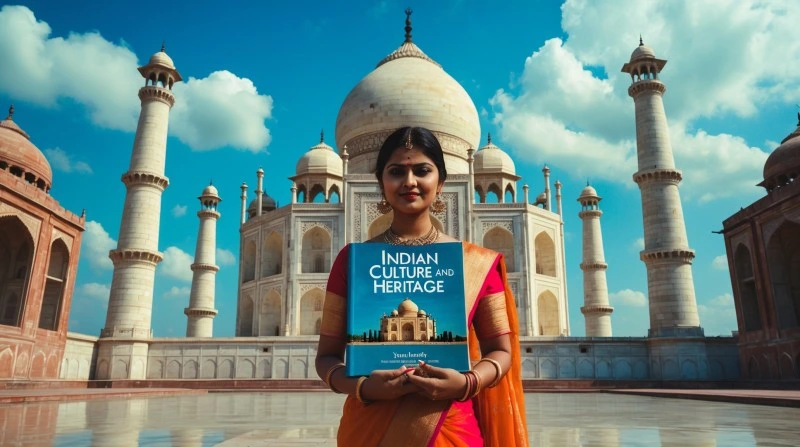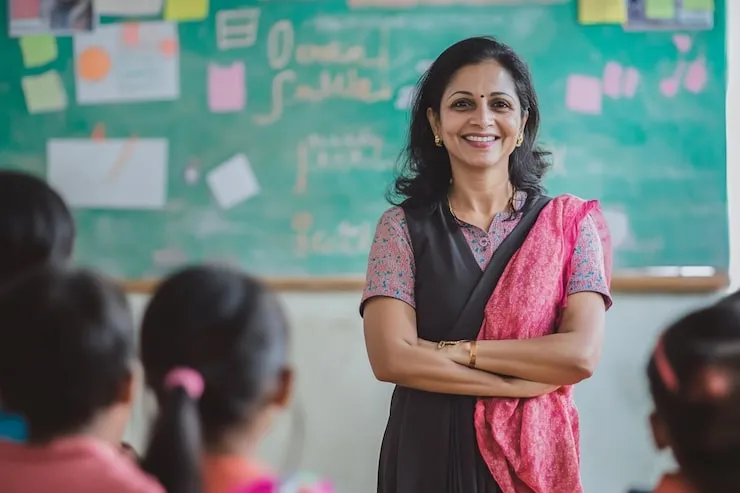Hello friends! Today I want to share my passion for India's rich cultural heritage. When I first started learning about Indian Culture and Heritage General Knowledge, I was amazed by how deep and diverse it is. There's so much to discover, from ancient traditions to modern celebrations.
What Makes Indian Culture And Heritage General Knowledge So Special?
India is like a beautiful tapestry with many colors and patterns. Each thread represents a different tradition, language, or custom. When I travel across India, I'm always surprised by how different things can be from one state to another! The beauty of Indian culture and heritage is that it has grown over thousands of years. It has roots in ancient civilizations but continues to bloom with new ideas. Let me take you on a journey through this fascinating world.
The Ancient Foundations of Indian Civilization
I remember visiting the ruins of the Indus Valley Civilization and being amazed that people had such advanced cities over 5,000 years ago! These ancient cities like Harappa and Mohenjo-daro had amazing drainage systems and well-planned streets. The people who lived there created beautiful art and crafts. They made seals with animal carvings and little statues. Whenever I see these artifacts in museums, I feel connected to these ancient people.
India's old knowledge systems are super impressive too. Did you know that ancient Indians were math wizards? They came up with the concept of zero that we use today! They also made big discoveries in astronomy, medicine, and many other fields.
The Religious Diversity That Shapes Indian Culture
One thing I love about India is how many different religions live side by side. Hinduism, Buddhism, Jainism, and Sikhism all started in India. Later, religions like Islam, Christianity, Zoroastrianism, and Judaism came to India, and people added their own special touches to them.
When I visit different religious places in India, I notice how each one has its own beautiful customs:
- In Hindu temples, I watch people offer flowers and fruits to colorful gods and goddesses
- At Buddhist stupas, I see monks in orange robes meditating peacefully
- In Jain temples, I admire the detailed marble carvings and the gentle philosophy of non-violence
- At Sikh gurdwaras, I enjoy the beautiful singing and the free community meals
- In mosques, I hear the beautiful call to prayer five times a day
- In churches, I see how Indian Christians have added local art and music to their worship
This mix of religions makes Indian heritage so rich and colorful!
The Artistic Treasures of Indian Culture
I could spend days talking about Indian art! Every time I see a new art form, I fall in love all over again.
Classical Dance Forms That Tell Ancient Stories
Indian culture and heritage general knowledge isn't complete without understanding its dance forms. When I watched my first Bharatanatyam performance, I was blown away by how the dancer could tell whole stories just with her eyes and hand movements!
Each dance form comes from a different part of India:
- Bharatanatyam from Tamil Nadu has sharp, precise movements
- Kathak from North India has amazing spins and footwork
- Odissi from Odisha looks like the beautiful sculptures in old temples
- Kuchipudi from Andhra Pradesh combines dance and acting
- Manipuri from the Northeast has gentle, flowing movements like waves
- Kathakali from Kerala uses colorful makeup and big expressions to tell stories
- Mohiniyattam, also from Kerala, is graceful and gentle like a swaying flower
I've been learning a little Kathak myself, and even the basic steps are super hard! It gives me huge respect for the dancers who make it look so easy.
Musical Traditions That Touch the Soul
The first time I heard a morning raga played on the sitar as the sun was rising, I got goosebumps! Indian culture's musical traditions are so deeply connected to emotions and times of day. Hindustani classical music from North India and Carnatic music from South India both use ragas (melody patterns) and talas (rhythm patterns), but they sound quite different.
I love how musicians can improvise within these patterns, making each performance unique. Folk music is just as amazing! Every region has its own special songs for weddings, harvests, and festivals. When I visit villages and hear people singing together while they work in the fields, it feels like stepping back in time.
Literature and Languages: A Rich Tapestry of Expression
Did you know India has 22 official languages and hundreds of dialects? Each one has its own amazing literature! I started by reading translations of ancient texts like the Vedas, Upanishads, and epics like the Mahabharata and Ramayana. These stories are thousands of years old but still have lessons that make sense today!
Then there are beautiful poems by people like Kalidasa, Mirza Ghalib, and Rabindranath Tagore. I keep a book of Tagore's poems on my bedside table and read one every night before sleeping. Modern Indian writers are just as incredible. Authors like R.K. Narayan, Arundhati Roy, and Vikram Seth tell stories that help me understand different parts of Indian life.
Festivals and Celebrations: The Living Heritage
My favorite part of Indian heritage has to be the festivals! There's practically a celebration happening somewhere in India every single day.
Colorful Festivals That Bring Communities Together
Quiz on Indian culture and heritage often includes questions about festivals because they're such an important part of life here! Each festival has its own special foods, clothes, and customs.
Diwali is probably the most famous festival, with beautiful lamps and fireworks lighting up the night. I love buying new clothes and sharing sweets with my neighbors during this "Festival of Lights." Holi, the "Festival of Colors," is super fun! Everyone throws colored powders and water at each other, and all differences disappear under the rainbow of colors.
My clothes get completely ruined every year, but it's worth it for the memories! Regional festivals are just as exciting. When I visited Kerala during Onam, I was amazed by the beautiful flower arrangements (pookalams) and the grand feast (sadya) with over 25 dishes served on banana leaves!
Food Traditions That Celebrate Regional Flavors
Oh my goodness, the FOOD! Indian cuisine is like Indian culture itself – diverse, colorful, and full of surprises!
Each region has its own special dishes:
- North India loves its rich, creamy curries and fresh bread like naan and roti
- South India makes amazing rice dishes like dosa, idli, and uttapam
- East India is famous for fish curries and sweet treats
- West India has spicy street foods and sweet-sour flavors
- Northeast India uses simple, fresh ingredients with unique herbs
The spices are what make Indian food special. My grandmother taught me that each spice isn't just for flavor – many have health benefits too! She always says turmeric is nature's antibiotic and ginger is good for digestion.
Traditional Knowledge Systems and Practices
Indian culture and heritage general knowledge includes understanding the amazing scientific and medical knowledge developed thousands of years ago that we still use today!
Ayurveda: The Science of Life and Healing
I grew up with my mom giving me turmeric milk when I had a cold and neem paste for skin problems. These are simple Ayurvedic remedies that people have used for thousands of years! Ayurveda sees each person as unique, with their own balance of elements (doshas).
When I learned about my dosha type, it helped me understand why certain foods and activities make me feel better than others. What I find most amazing is how Ayurvedic doctors could perform complex surgeries over 2,000 years ago! The ancient text Sushruta Samhita describes surgical tools and procedures that were way ahead of their time.
Yoga and Meditation: Gifts to the World
My day starts with a few simple yoga poses and breathing exercises. This practice comes from ancient India but has now spread around the world! True yoga isn't just about the physical poses though. It's a complete system for balancing the body and mind.
The word "yoga" means "union," and that's what it aims for – connecting your physical self with your inner consciousness. Meditation techniques from India have helped millions of people find peace in our busy, stressful world. When I'm feeling overwhelmed, just 10 minutes of meditation helps me find my center again.
Architecture and Monuments: Stories in Stone
Every time I visit an ancient Indian monument, I'm amazed by the skill and patience of the builders. How did they create such perfect structures without modern tools?
Ancient Marvels That Have Stood the Test of Time
The rock-cut caves at Ajanta and Ellora blow my mind! People carved entire temples out of solid rock over 1,500 years ago. The detailed paintings at Ajanta are still colorful after all these centuries. The temples of South India are like mountains of sculpture. Places like Hampi and Mahabali puram have so many carvings that you could spend weeks studying them and still notice new details.
And of course, there's the Taj Mahal – probably the most famous Indian monument. When I first saw it at sunrise, the white marble seemed to glow with an inner light. It's a perfect example of how Indian heritage has been influenced by different cultures while remaining uniquely Indian.
Living Architecture: Traditional Homes and Villages
It's not just the famous monuments that show Indian architectural heritage. Traditional homes in different regions are built with amazing knowledge of local climate and materials. In hot, dry Rajasthan, homes have thick walls and small windows to keep out the heat. In rainy Kerala, houses have sloped roofs and raised floors to deal with monsoon floods.
In the Himalayas, wooden homes with intricate carvings stay warm during snowy winters. I especially love the step-wells (baolis) of Gujarat and Rajasthan. These beautiful structures provided water and a cool place to gather during hot summers. They show how practical needs can be met with artistic beauty.
The Influence of Indian Culture Around the World
Indian culture and heritage hasn't stayed within the country's borders. It has traveled far and wide, influencing art, philosophy, and science around the world.
Ancient Connections Along Trade Routes
The spice trade connected India to distant lands thousands of years ago. Indian cotton textiles, gems, and spices were highly valued from Rome to China. Along with these goods, ideas and cultural practices traveled too. Buddhism spread from India to Tibet, China, Japan, and Southeast Asia. You can see Indian artistic influences in the temples of Angkor Wat in Cambodia and Borobudur in Indonesia.
Modern Cultural Exports: From Yoga to Bollywood
Today, Indian culture continues to inspire people worldwide. Yoga studios have popped up in every major city around the globe. Indian clothing styles and designs regularly influence fashion trends. Bollywood movies have fans in surprising places – from Russia to Nigeria! Indian music, especially through fusion with Western styles, has found new audiences everywhere. And of course, Indian food has become a global favorite. There's hardly a city in the world where you can't find a restaurant serving curry and naan bread!
Living Heritage: How Traditions Continue Today
The best thing about Indian culture and heritage is that it's not just preserved in museums – it's alive in everyday life!
Crafts and Handmade Traditions
Traditional crafts are still practiced in villages and towns across India. When I buy a handwoven saree or a hand-painted wooden toy, I'm supporting skills that have been passed down for generations.
Each region has its special crafts:
- Blue pottery from Jaipur
- Bidri metalwork from Bidar
- Madhubani paintings from Bihar
- Pashmina shawls from Kashmir
- Chettinad woodwork from Tamil Nadu
- Bell metal crafts from Bastar
- Phulkari embroidery from Punjab
I've started collecting pieces from different regions, and each one tells a story about the place it comes from.
Modern Interpretations of Ancient Wisdom
Young Indians are finding new ways to keep traditions relevant. Fashion designers create modern clothes using traditional weaving and printing techniques. Chefs reinvent classic recipes with contemporary presentation.
Musicians mix classical ragas with electronic beats, and dancers bring ancient forms to modern themes. This creative evolution keeps Indian heritage vibrant and meaningful for new generations.
10 Quiz Questions on Indian Culture to Test Your Knowledge
Now let's see how much you've learned about Indian culture and heritage general knowledge! Try answering these questions:
- Which ancient Indian civilization had advanced drainage systems over 5,000 years ago?
- What are the two main classical music traditions of India?
- Which Indian dance form originated in Tamil Nadu and is known for its precise footwork?
- What is the name of the traditional Indian medical system based on balancing body types?
- Which famous Indian monument was built by Emperor Shah Jahan as a tomb for his wife?
- What festival is known as the "Festival of Colors" in India?
- Which ancient Indian text contains over 100,000 verses and is considered the longest epic poem in the world?
- What mathematical concept was first developed in ancient India that revolutionized mathematics?
- Which Indian craft features intricate designs painted by women on mud walls of their homes?
- What is the name of the traditional Indian greeting with palms pressed together?
(Answers: 1. Indus Valley Civilization, 2. Hindustani and Carnatic, 3. Bharatanatyam, 4. Ayurveda, 5. Taj Mahal, 6. Holi, 7. Mahabharata, 8. Zero, 9. Madhubani/Mithila painting, 10. Namaste)
Why Learning About Indian Culture and Heritage General Knowledge Matters
I believe understanding cultural heritage helps us know who we are and where we come from. Indian culture has survived for thousands of years because each generation valued and protected it. Learning about Indian heritage isn't just for Indians – it's for anyone who wants to understand one of humanity's oldest continuous civilizations. The philosophy, art, and knowledge systems of India offer valuable lessons for modern life.
My Personal Journey with Indian Heritage
I started learning about Indian culture and heritage general knowledge because I wanted to understand my roots. But along the way, I discovered so much more! I've tried learning classical music (my teacher says I need A LOT more practice!), cooking regional dishes (some successful, some disasters!), and even making simple handicrafts (my embroidery looks like it was done by a 5-year-old!).
Each experience has given me new respect for the skills and knowledge that have been preserved through generations. I may not be an expert, but the journey of discovery has been rewarding.
Now I invite you to explore Indian culture and heritage too! Start with what interests you most – maybe the food, music, art, or philosophy. There's so much to discover, and each piece helps complete the beautiful puzzle of Indian civilization. Let me know in the comments which aspect of Indian culture you find most fascinating! And if you'd like more articles about specific traditions or regions, tell me what you'd like to learn about next!













